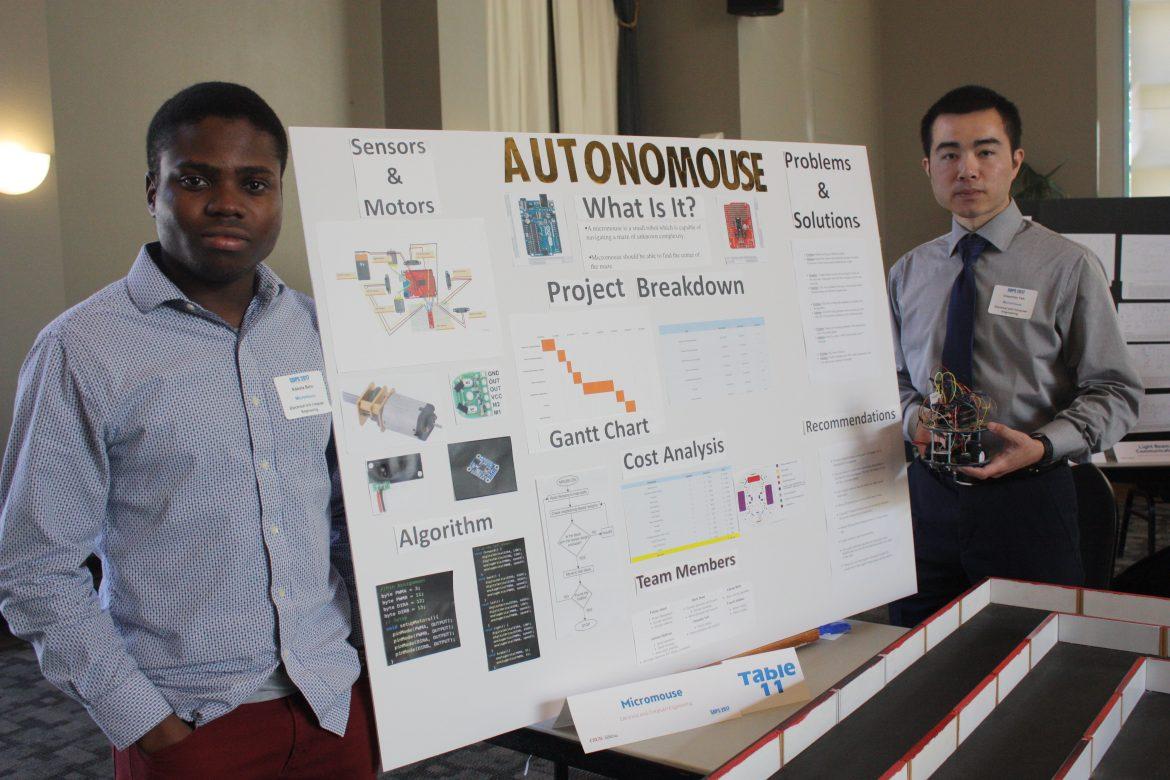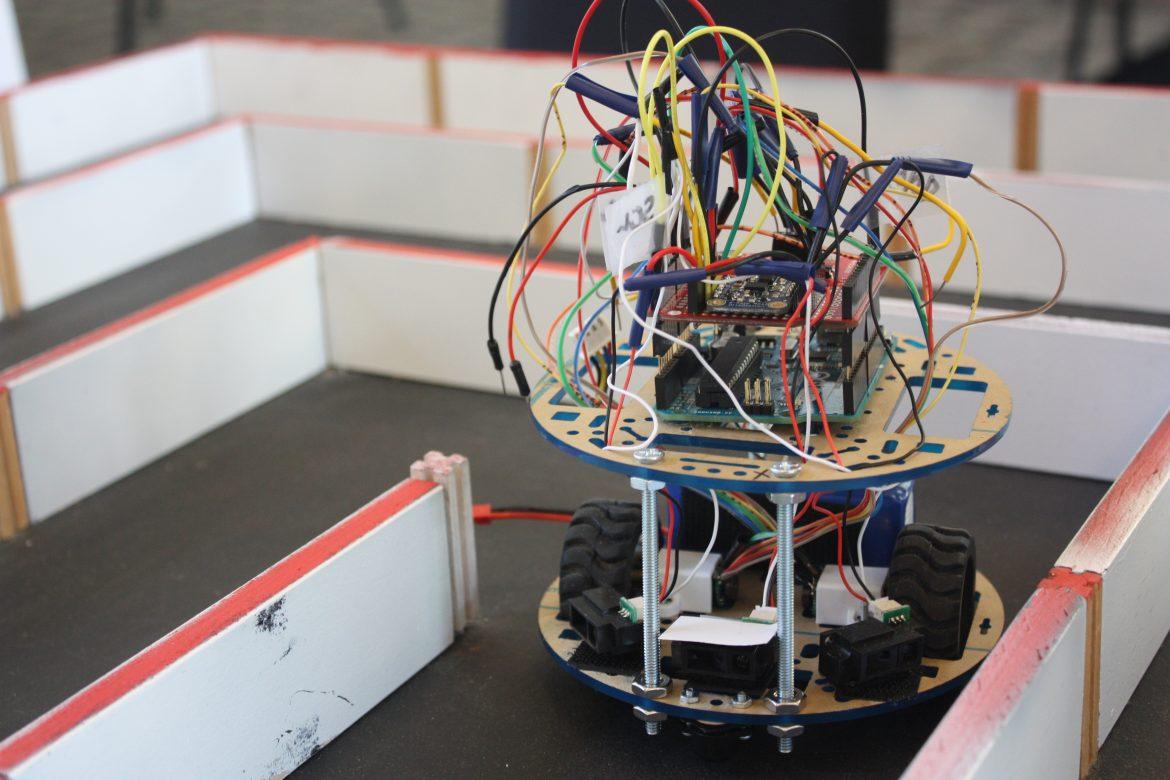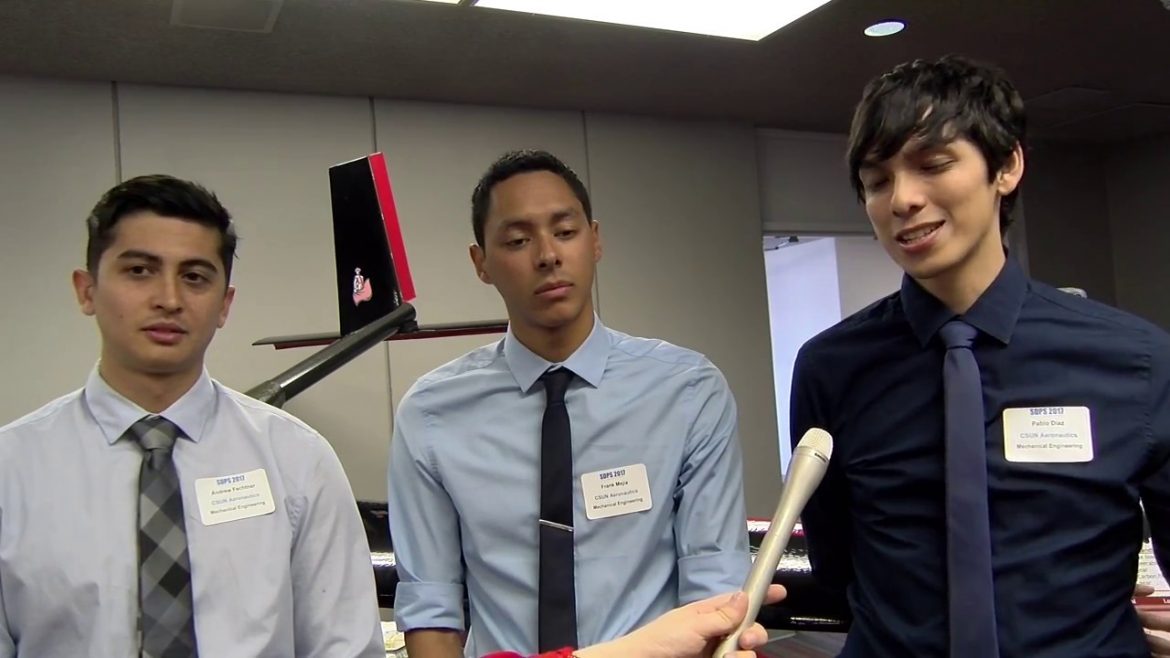CSUN’s engineering department held their eighth annual Senior Design Project Showcase in the University Student Union on Friday.
The goal of the showcase was for seniors in the various degrees of the engineering program to present the projects they had worked on throughout the semester, or in some cases, the school year.
Projects were split between two rooms with the smaller computer science and electrical and computer engineering projects being displayed in the Grand Salon, while the larger mechanical and civil engineering projects were in the Northridge Center.
At the event, which was free and open for anyone to attend, groups set their projects up and were available to answer questions about what their projects were. Some projects were more serious, such as the Wheelchair Assist project, a design for a mechanical lift system to help people in or out of a wheelchair.
The rig was designed to fit into a standard model wheelchair, and also includes rails that move with the seat to provide a place for the person to hang on to or brace themselves against. The lift mechanism supports up to 400 pounds of weight, though the actuator could be replaced in order to support a higher amount of weight.
Some projects were a bit lighter, such as Super One Punch Team Turbo HD Remastered 2, which was a simple two-dimensional fighter game that was inspired by the “Street Fighter” series, which according to team members, was the inspiration for the long name of the game.
The game included four playable characters, single player and multiplayer modes, and controller support. The demo version set up for the showcase had a controller set-up modeled after a classic arcade game.
Other projects, such as the Autonomous Car project, worked to improve on technology that already exists. This project built onto already existing self-driving car technologies, specifically how they interacted with intersections.

“Self-driving cars today, they’re all based on stop lights and lines, they see the light is red so they stop at the light. Our design, they don’t stop at the intersections, they keep going.” team member Vartan Shahjanian said.
Their design was based on having route data from the cars sent to a program to control each intersection, which would then calculate when cars would need to slow down or speed up as they approached the intersection so that cars would not collide.

Other projects were based on entrances for annual competitions, such as the CSUN Aeronautics team, which built a small mechanical airplane capable of carrying up to 55 pounds of weight. The team was also looking at potential future uses for their design, primarily humanitarian work.
“We figured we could use it to carry medicine and food into war-torn countries, and were even looking at making it fully automated, so that you don’t have to worry about a human knowing how to fly,” team leader Pablo Diaz said.
Every project at the showcase worked in some way or another to improve some aspect of society or increase global sustainability.












